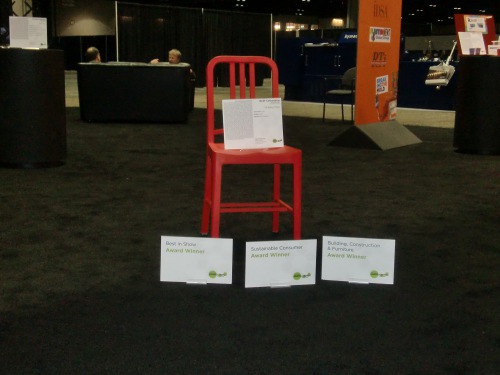It sounds like a science-fiction solution to many of the world’s energy problems — a device that can convert plastic back into liquid fuel.

Local businessman Bernie Karl thinks the concept might not be that far-fetched. The owner of K&K Recycling and Chena Hot Springs Resort spent Friday morning watching it happen in a back room of his Richardson Highway office.
While insisting his newly purchased Blest plastic-to-oil machine is “no silver bullet,” Karl believes it could play a significant role keeping plastic out of landfills while contributing relatively inexpensive fuel to Alaskans.
It’s been fired up at his Richardson Highway businesses about a dozen times, making roughly a gallon of fuel out of more than
10 pounds of plastic. In the early stages, Karl said, it’s everything he’d hoped it would be.
“It might not work for everyone, but it sure would be good for a community,” Karl said.
Karl gained a reputation for innovative energy ideas by converting Chena Hot Springs Resort into a business fueled almost entirely by geothermal power. At K&K Recycling, he began a large-scale recycling program last October. It collects paper, glass and metal from the University of Alaska Fairbanks, local schools and Fort Wainwright.
For months, Karl has stockpiled discarded plastic at the business on the Richardson Highway near North Pole. Plenty of people have wondered why, since there was no obvious use for it in Interior Alaska.
The Blest machine, he said, is the answer. Karl said he’s the first person in North America to purchase the device.
“I really took a lot of criticism for collecting plastic,” Karl said. “I may have the last laugh.”
The Japanese machine, which costs $16,000 and can fit on a desktop, works much like a still. Various plastics, from styrofoam to empty bottles, are placed into a vat that is electrically heated to 800 degrees, turning most of the plastic into a gas. The gas is routed through a nearby container of water, which instantly cools it and turns it into fuel.
The end product has a golden color and carries the biting scent of burning plastic. Karl described it as “diesel-like.” He plans to test whether it can replace standard fuel in a space heater.
A Blest video about the device claims its product can easily be refined into gasoline, diesel or kerosene. A UAF petroleum engineering professor couldn’t be reached to discuss the viability of such a device.
Karl said there are plenty of skeptics about the process, and he admits he’s still waiting to see if it does everything its makers claim. A filter is supposed to remove harmful emissions from the process, and he plans to have the air quality tested before boosting production.
“I believe in it,” Karl said. “I just want to make sure everything does what (they) say it does.”
Karl said he’s always been intrigued about the potential of recycling plastic, which is made from petroleum but typically ends up piled in a landfill at the end of its life.
So when he saw an online presentation from Blest, which designed the machine, he placed an order within 20 minutes. The video for the plastic-to-oil machine was posted on YouTube last summer and caused a stir on the Internet as a potential savior to the world’s energy crisis.
Karl said it takes a kilogram of plastic to create about a liter of fuel. So far, a batch has used 3 kilowatts of electricity or less, which he said translates into less than $2 per gallon for refined fuel at local electric rates.
With the added benefit of producing residual heat that could warm a building, he said the process appears to make good economic sense.
“If it in fact does what it says, it all pencils out well,” Karl said.
Karl said he’s seen other devices that claim to transmute plastic to fuel. None operates as cheaply as the Blest machine, he said.
If the smaller Blest device performs as Karl expects, the next step it to buy a larger $250,000 version that could produce as much as 2,400 gallons of fuel per day. He said the larger device can fit in the back of a pickup and would be more efficient.
He said the machine would be even more valuable in rural Alaska, where gas can cost $10 per gallon or more. The machine could be powered with wind turbines, he said. Under the right circumstances, he said, it could transform village life.
Before that, he hopes to create enough fuel to run his company’s fleet of vehicles. The inventor of the process, Akinori Ito, will visit in March to help K&K take the next step, Karl said.
“We’re just trying to learn what we can learn,” he said.
Source : newsminer.com





